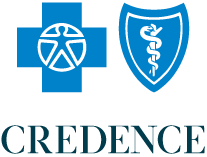Access to affordable healthcare is important in every stage of our lives. But as we age, it becomes even more of a priority. Health insurance helps lower medical expenses and makes care more affordable. In the U.S., most people get health insurance through their employers. So where does that leave retirees?
Medicare is the health insurance the U.S. government offers for people who are 65 or older. There are a few different types of Medicare coverage, and there are different rules for people who are retired at 65 versus people who are still working at 65 and beyond. The Medicare website can help you find out when to sign up at this link.
Medicare vs. Medicaid
Medicaid is a program that helps make healthcare more affordable for certain people and their families—including those who have a low income, are 18 and younger or 65 and older as well as people who are pregnant, blind or disabled. If you’re eligible for Medicare and have limited income and resources, you can apply for Medicaid too.
Types of Medicare coverage
- Part A: hospital insurance helps cover inpatient hospital care, care from skilled nursing facilities, hospice care and home healthcare. Most people don’t have to pay for part A coverage because of contributions from payroll taxes during their working years.
- Part B: medical insurance helps cover services from doctors and other healthcare providers, many preventive services, outpatient care, home healthcare and medical supplies. For part B, you’ll pay a monthly premium. If you stop working or lose your job-based health coverage, you have eight months to sign up for part B. If you wait, you’ll pay a monthly penalty as long as you have part B coverage. The penalty goes up the longer you wait. To have Medicare coverage start immediately when your job-based benefits end, sign up for part B the month before you plan to retire.
- Part D: prescription insurance helps cover the cost of prescription drugs. You have two months to sign up for this coverage after your job-based coverage ends.
- Original Medicare includes parts A and B. Part D can be purchased separately. You can use any U.S. doctor or hospital that takes Medicare. You can pair original Medicare with coverage from Medicaid or a former employer or union. You can also purchase Medigap supplemental insurance from a private company to help pay your out-of-pocket costs, but you must do this within six months of first getting part A and part B.
- Part C: Medicare Advantage is a bundled combination of coverages from part A, part B and usually part D. Medicare Advantage plans are Medicare-approved plans offered by private insurance companies. These plans usually require you to use in-network doctors. Some part C plans have lower out-of-pocket costs than original Medicare, and some offer extra benefits like vision, hearing or dental services. You must sign up for Medicare Advantage within two months of your job-based coverage ending.
To learn more about who is eligible for Medicare, visit this link. For up-to-date details about Medicare costs, visit this link. You can find out more about Medicare in general at this link.

